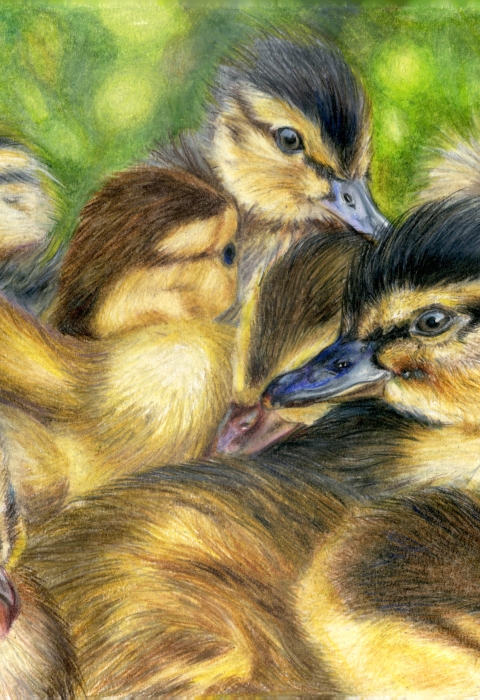What We Do
A four-part curriculum guide with activities and resources can be used as a year-round study plan to assist students in exploring science in real-life situations. Using scientific and wildlife observation principles, students are encouraged to communicate visually what they have learned through an entry into the Junior Duck Stamp art contest. This non-traditional pairing of subjects brings new interest to both the sciences and the arts. It crosses cultural, ethnic, social and geographic boundaries to teach greater awareness of our nation's natural resources.
Approximately 20,000 students entered state art contests in 2019. By displaying student artwork and delivering waterfowl and wetland related outdoor activities, state coordinators share student accomplishments with over 300,000 students, families and communities annually. Several students who have participated in the program have gone on to become full-time wildlife artists and conservation professionals; many attribute their interest and success to their early exposure to the Junior Duck Stamp Program.
Our Services
The Federal Junior Duck Stamp Conservation and Design Program is a dynamic art- and science-based curriculum that teaches wetland and waterfowl conservation to students in kindergarten through high school. The program encourages students to explore their natural world, invites them to investigate biology and wildlife management principles and challenges them to express and share what they have learned with others.
The winning artwork from a national art contest serves as the design for the Junior Duck Stamp, which the U.S. Fish and Wildlife Service produces annually. This $5 stamp has become a much sought after collector's item. One hundred percent of the revenue from the sale of Junior Duck stamps goes to support recognition and environmental education activities for students who participate in the program.
To learn more, please visit the National Junior Duck Stamp Page.
To download curriculum please click here.
